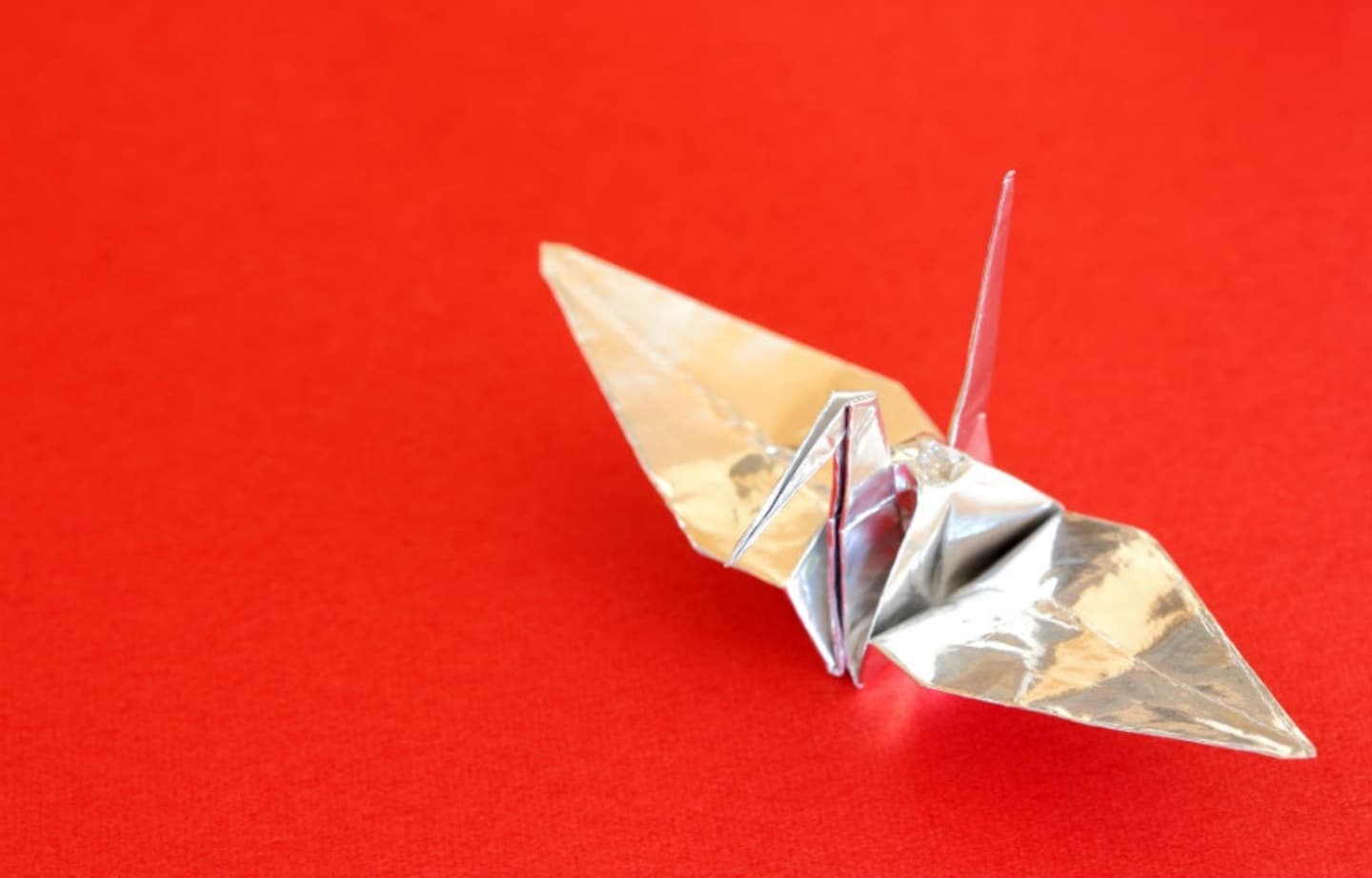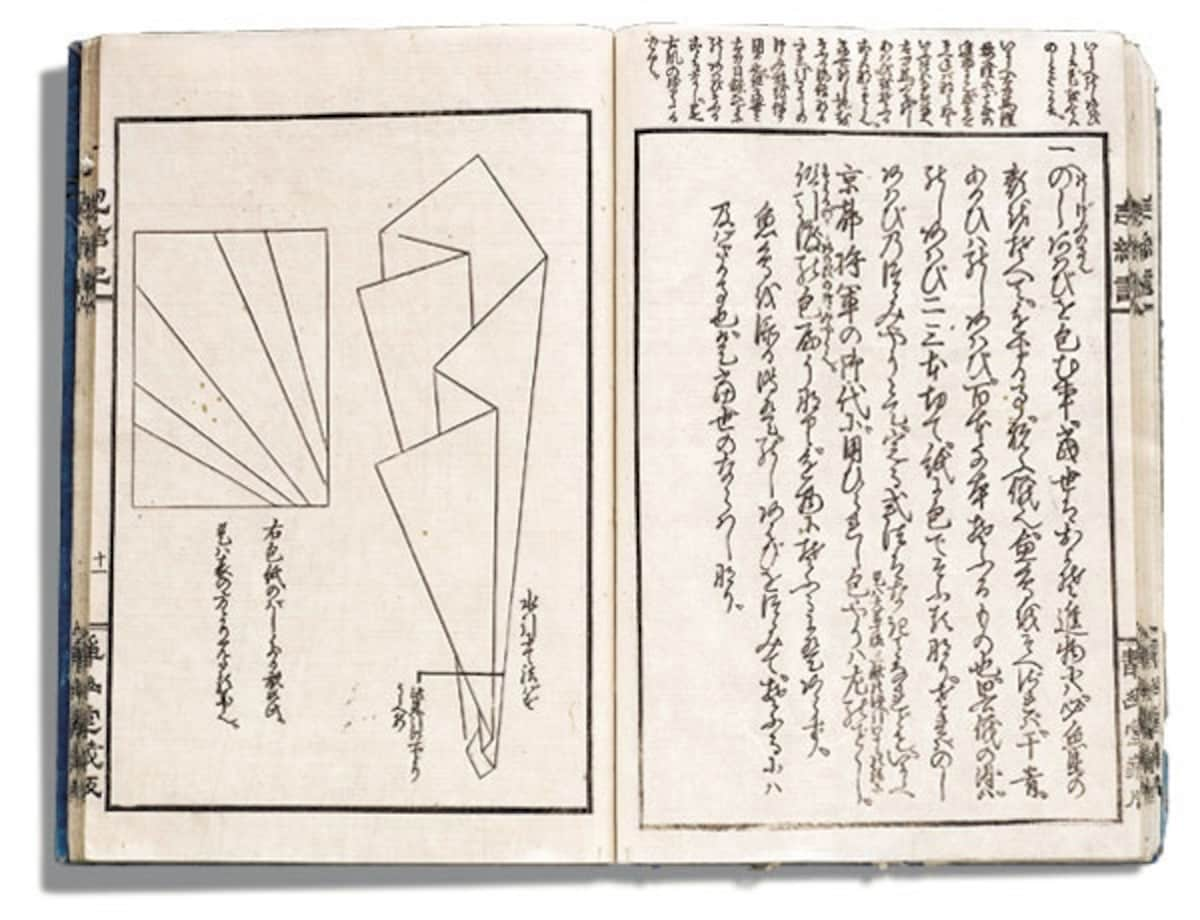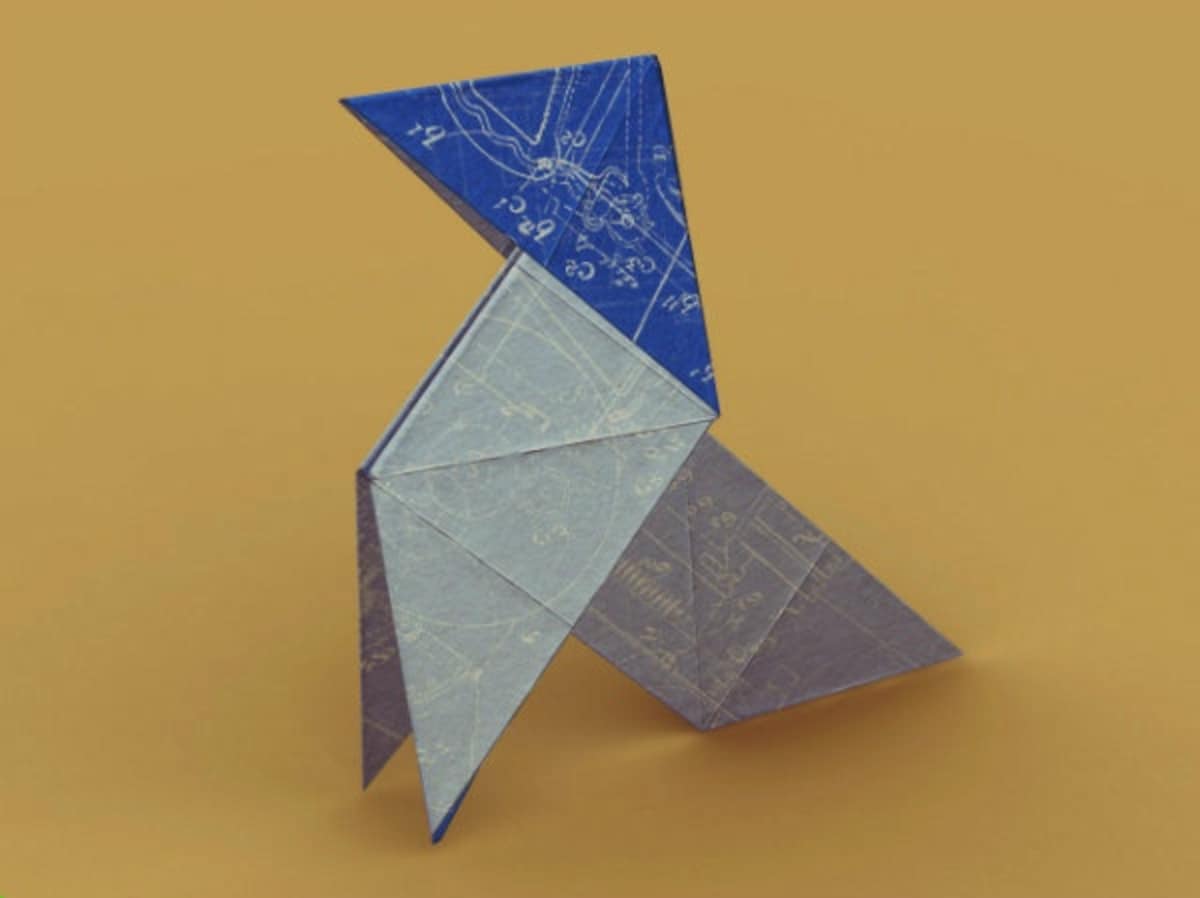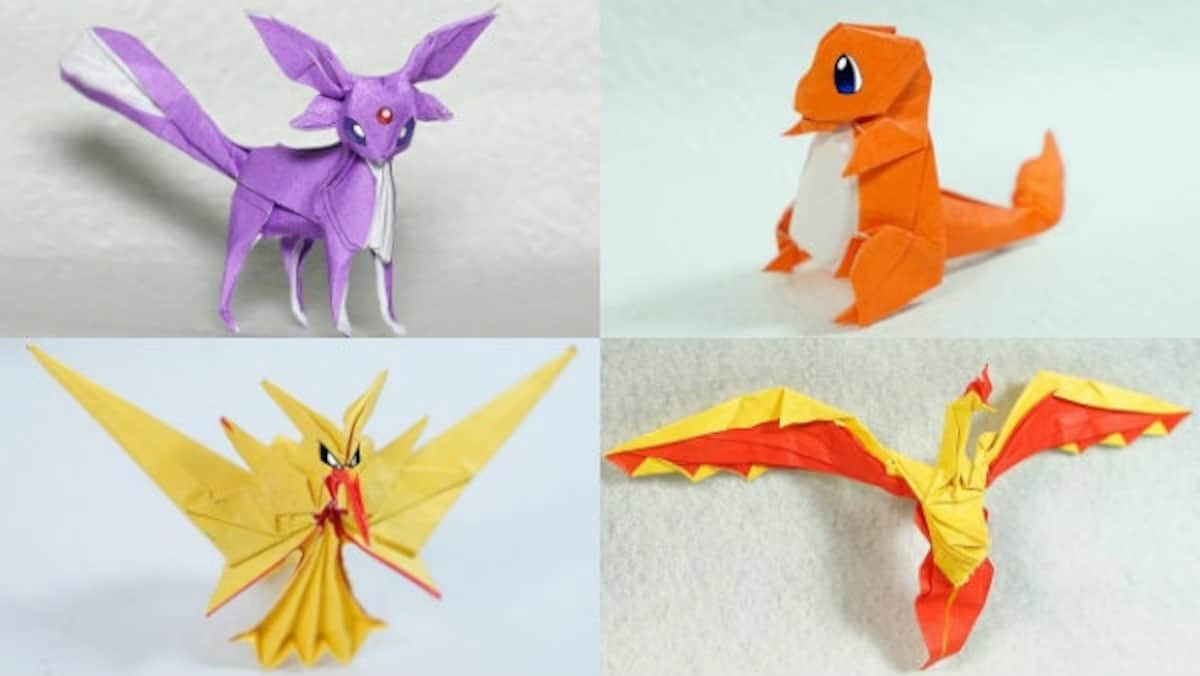The History of Origami

The history of origami is challenging to unfold, as any ancient pieces have long since disintegrated. Buddhist monks brought paper to both Korea and Japan from China around the sixth century. While it’s believed that Japan’s tradition of folding paper began shortly thereafter, it’s unknown whether this was based on an earlier tradition from China.
By Michael KanertEarly Years

http://www.origami-resource-center.com/history-of-origami.html
For the next thousand years, Japanese paper folding was largely restricted to religious ceremonial use, as paper was expensive. However, paper-making was one of the many industries that flourished when Japan’s various feudal lords were encouraged to expand local industry during the Edo Period (1603-1868), making paper plentifully available and inspiring recreational forms of origami.
Some of the earliest non-religious uses of folded paper were noshi, a sort of folded wedge or chevron that was given with a gift as a token of good fortune, as well as tsutsumi, formal gift wrapping. The first known representative origami were paired butterflies that adorned sake bottles at Shinto weddings, used to represent the bride and groom, and first mentioned in a short poem by Ihara Saikaku in 1680.
The first book on origami was Tsutsumi-no-Ki, published in 1764, which had instructions on folding noshi and tsutsumi. The first known recreational origami book was Hiden Senbazaru Orikata (Secret Techniques of Thousand Crane Folding), published in 1797, which offered basic diagrammatic instructions on 49 different forms of paper cranes.
European Influence

http://blog.ancient-workshop.com/post/2013/04/25/Pajarita
Half a world away, an independent tradition of paper folding developed in Europe after paper was introduced to the continent in the 11th or 12th century, most notably in Spain and Germany.
European folding patterns tended to use 45-degree folds, making them more obviously geometric than Japanese folded paper, which made more use of 22.5-degree folds. As a result, paper folding was chosen as an easy way to introduce geometry in Germany’s first kindergartens. When the same kind of school system was adopted in Japan during the Meiji Period (1868-1912), it was not Japanese, but German paper folding that was taught to young pupils. As a result, modern Japanese origami is in fact a combination of both the Japanese and European traditions.
The name origami is itself a fairly modern creation. Japanese paper folding was called orisue (折据, literally “folded setting down”) or origata (折形, folded shape) in the Edo Period. Building on the same root, oru (折, to fold), it later became orimono (折り物, folded thing) before finally settling into the very literal origami (折紙, folded paper) sometime between the late 19th and mid-20th centuries.
Modern Forms

https://www.youtube.com/watch?v=7VWPbVefGMI
The modern popularization of Japanese origami is largely attributed to Akira Yoshizawa, who is credited with tens of thousands of original designs. In 1954, he published Atarashi Origami Geijutsu (New Origami Art), which laid the foundation for what is now known as the Yoshizawa-Randlett system of notation for origami folds, now the de facto standard, which uses dashed and dotted lines to represent mountain and valley folds, respectively.
Nowadays, origami most typically uses a single sheet of paper, often called chiyogami (千代紙), to create a representative shape such as a crane, frog or flower using only folds and no glue or scissors. However, this has not always been the case, and there are other techniques that allow cutting in particular, while some methods involve the combination of multiple sheets of paper. “Modular” or “unit” origami uses multiple folded shapes to form a larger final construction, while “wet folding” allows the creation of curved shapes, and “action origami” refers to toy-like origami such as jumping frogs.
There are many different types of origami, and there is no single “correct” form per se. People continue to both pass down longstanding designs and create new ones as the art continues to develop and adapt to modern interests and needs.



